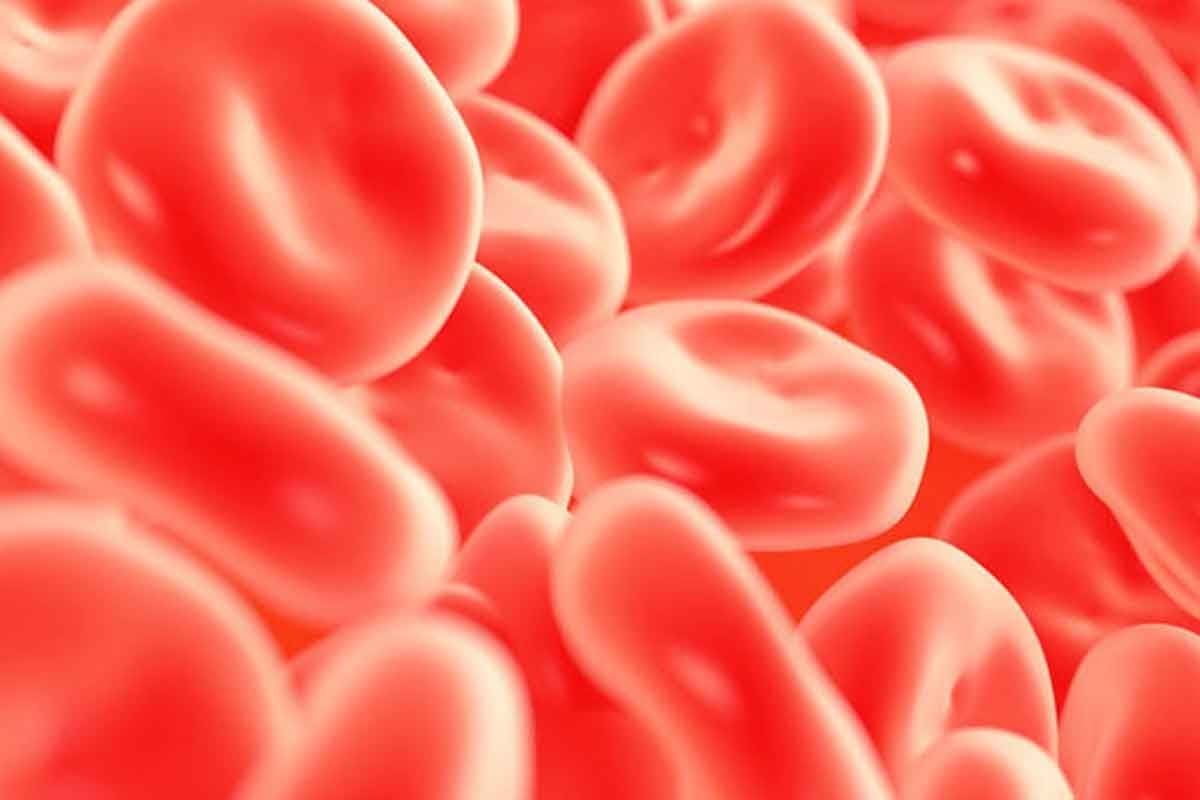Last Updated on November 27, 2025 by Bilal Hasdemir

Getting a brain tumor diagnosis can feel scary. But knowing your surgery options helps you feel more in control. At Liv Hospital, we focus on keeping you safe and helping you get better.
Brain tumor surgery is a detailed procedure to take out bad cells from the brain. We aim to get rid of the whole tumor without harming good tissue. We use the latest methods, like craniotomy and small incisions, to help you heal well.
Key Takeaways
- Understanding surgical options is key to making smart choices.
- Brain tumor surgery tries to remove bad cells while keeping your brain working.
- Craniotomy and small incision methods are often used.
- Your safety and success are our main goals.
- Liv Hospital supports you every step of the way.
Understanding Brain Tumors

It’s important to understand brain tumors to find the best treatment. These tumors grow out of control in the brain. They can cause different symptoms based on where they are and how big they get.
Types of Brain Tumors: Benign vs. Malignant
Brain tumors fall into two main types: benign and malignant. Benign brain tumors are not cancerous and grow slowly. They usually don’t spread to other parts of the brain. On the other hand, malignant brain tumors are cancerous and grow fast. They can spread to other brain areas. Knowing the type of tumor is key to choosing the right treatment.
Common Symptoms and Diagnosis
Symptoms of brain tumors vary a lot. They can include headaches, seizures, and problems with memory or focus. Doctors start by doing a neurological exam to check brain functions.
They also use MRI or CT scans to see the tumor. These tests help understand how the tumor affects the brain.
We use advanced tools like neuro-navigation and fluorescence-guided resection for better results. These tools help us find and remove tumors more accurately. This is true even for tumors that were hard to treat before.
When Brain Tumor Surgery Is Necessary

Brain tumor surgery is needed when a tumor is a big risk to a patient’s health. This risk comes from current symptoms or future problems. The decision to have surgery depends on the tumor’s type, size, and where it is. It also depends on the patient’s health and medical history.
Indications for Surgical Intervention
Surgery is often needed for brain tumors that cause big symptoms or could cause problems later. The main reasons for surgery include:
- Tumors that cause neurological problems or increase pressure in the brain
- Tumors that grow fast or might be cancerous
- Tumors that don’t respond to treatments like chemotherapy or radiation
A leading neurosurgeon says,
“The goal of surgery is not only to remove the tumor but to preserve neurological function and improve the patient’s quality of life.”
Goals of Brain Tumor Removal
The main goal of brain tumor surgery is to remove as much tumor as possible. This must be done carefully to avoid harming the brain. Advanced technology and precise techniques are needed. The surgery aims to remove as much tumor as possible while keeping brain function intact.
Other goals include:
- Relieving symptoms caused by the tumor
- Improving the patient’s quality of life
- Providing tissue for pathological examination to guide further treatment
In summary, brain tumor surgery is a complex procedure needed when a tumor is a big health risk. Understanding the reasons and goals of surgery helps patients prepare for treatment and what to expect.
Pre-Surgical Evaluation Process
The pre-surgical evaluation is key to planning brain tumor removal. It gathers vital info about the tumor and the patient’s health. This helps our team plan a safe and effective surgery.
Diagnostic Imaging Techniques
Diagnostic imaging is essential in this process. MRI (Magnetic Resonance Imaging) and CT (Computed Tomography) scans give us detailed brain images. These images show the tumor’s size, location, and how it might affect brain function.
Other imaging methods like functional MRI (fMRI) or diffusion tensor imaging (DTI) might be used. They help us see how the tumor affects important brain areas and nerve tracts. This info is key for planning the surgery and avoiding damage.
Functional Assessment Tests
Functional assessment tests are also vital. They check the patient’s brain function and look for any concerns. Tests like neuropsychological testing check cognitive function, memory, and other brain abilities.
These tests give us insights into how the tumor impacts brain function. They help us tailor the surgery to the patient’s needs.
Surgical Planning and Risk Assessment
We use imaging and assessment results to plan the surgery. The plan considers the tumor’s details and the patient’s health. This ensures the best possible surgery.
Risk assessment is a big part of planning. We look at possible risks like neurological problems or infection. We then plan how to avoid or manage these risks. This approach helps ensure the best care and outcomes for patients.
| Test/Procedure | Purpose | Benefits |
| MRI/CT Scans | Detailed imaging of the tumor and surrounding brain structures | Accurate diagnosis and surgical planning |
| Functional MRI (fMRI) | Assessment of tumor’s impact on critical brain areas | Minimizes risk of neurological damage |
| Neuropsychological Testing | Evaluation of cognitive function and neurological abilities | Personalized surgical planning and rehabilitation |
For tumors that can’t be removed, options like biopsy or palliative care might be considered. But, new tech allows some tumors thought to be inoperable to be removed. Our team works with patients to find the best option for their situation.
Brain Tumor Surgery Options and Techniques
Brain tumor surgery has changed a lot. Now, there are many options based on the patient and the tumor. The choice of surgery depends on the tumor’s size, location, and type.
Traditional Craniotomy Procedure
A traditional craniotomy is the most common surgery for brain tumors. It involves removing a part of the skull to get to the tumor. We use this when the tumor is big or hard to reach with other methods.
During the surgery, we watch the patient’s vital signs and brain functions closely. We remove the tumor and then close the skull.
Minimally Invasive Approaches
Minimally invasive surgery is getting more popular. It uses smaller cuts and less brain damage. Examples are endoscopic surgery and MRI-guided laser ablation.
Endoscopic surgery uses a small camera and tools to remove the tumor through a small cut. It’s good for tumors near the brain’s surface or hard to reach areas.
Awake Brain Surgery
Awake brain surgery is used for tumors in important brain areas. The patient stays awake and can follow commands. This lets we see how the brain is working during surgery.
This method helps we remove the tumor without harming the brain. It lowers the risk of brain damage.
Advanced Technologies in Brain Tumor Surgery
The field of brain tumor surgery has seen big changes with new technologies. These advancements have made surgeries more precise, cut down recovery times, and improved patient results. We’ll look at how neuro-navigation systems, fluorescence-guided surgery, and intraoperative MRI and ultrasound are changing brain tumor surgery.
Neuro-Navigation Systems
Neuro-navigation systems have changed how surgeons do brain tumor surgery. They use advanced imaging to create detailed brain maps. This helps surgeons find and remove tumors more accurately, without harming nearby healthy tissue.
Key Benefits of Neuro-Navigation Systems:
- Improved accuracy in tumor localization
- Enhanced preservation of surrounding brain structures
- Better surgical planning and execution
Fluorescence-Guided Surgery
Fluorescence-guided surgery is another big step forward. It uses fluorescent dyes to highlight tumors, making them stand out. This helps surgeons remove tumors more completely.
Intraoperative MRI and Ultrasound
Intraoperative MRI and ultrasound give surgeons real-time feedback during surgery. MRI lets them check how much tumor they’ve removed and make changes. Ultrasound helps them see where the tumor is and what’s around it. These tools make brain tumor surgery safer and more effective.
| Technology | Primary Benefit | Impact on Surgery |
| Neuro-Navigation Systems | Improved tumor localization | Enhanced precision in tumor removal |
| Fluorescence-Guided Surgery | Better visualization of tumor margins | Increased completeness of tumor removal |
| Intraoperative MRI and Ultrasound | Real-time feedback during surgery | Improved safety and efficacy of surgery |
By using these advanced technologies, we can greatly improve brain tumor surgery results. As these technologies keep getting better, we can expect even better outcomes for patients.
Addressing “Inoperable” Brain Tumors
When a brain tumor is called inoperable, it’s a tough time for patients and their families. This means the tumor can’t be safely removed by surgery. It might be because of where it is, how big it is, or other reasons.
Defining “Inoperable”
A brain tumor is inoperable if surgery is too risky. This could be because it’s close to important brain parts or is hard to tell apart from healthy tissue. Inoperable brain tumors need a special treatment plan. This plan focuses on easing symptoms and improving life quality.
A top neurosurgeon says, “Deciding a tumor is inoperable is a big decision. It’s based on a detailed look at the patient’s health and the tumor itself.”
“The goal is always to provide the best possible outcome for the patient, even when surgical removal is not an option.”
Biopsy Options for Diagnosis
For inoperable brain tumors, a biopsy might be done. This takes a small piece of the tumor for lab tests. Biopsy results help figure out the tumor type and plan treatment.
There are different ways to do a biopsy. Stereotactic biopsy uses a special system to find the tumor. The method chosen depends on the tumor’s spot and the patient’s health.
Palliative Surgical Approaches
Palliative surgery tries to ease symptoms and improve life quality. It might make the tumor smaller to ease pressure or fix problems like seizures.
Palliative care is key for inoperable brain tumors. It focuses on easing symptoms and stress from serious illness. Palliative surgery is made for each patient’s needs. It aims to keep them comfortable and as functional as possible.
Knowing about inoperable brain tumors and treatment options helps patients and families make choices. While it’s tough, there are ways to manage symptoms and improve life quality.
Preparing for Brain Tumor Surgery
Brain tumor surgery needs careful planning, both medically and mentally. We’ll walk you through the steps to ensure the best results.
Medical Preparations
Getting ready for surgery starts with medical prep. You might need to stop some medicines that could affect the surgery or healing. Blood thinners, for example, may need to be stopped before surgery. Always follow your doctor’s advice on medicines.
You’ll also have to do tests like blood work, ECGs, and imaging studies. These tests help your team plan the safest surgery.
| Test Type | Purpose | Timing |
| Blood Work | Check overall health and find issues | 1-2 weeks before surgery |
| Electrocardiogram (ECG) | Check heart health | 1-2 weeks before surgery |
| Imaging Studies (MRI, CT) | Get detailed brain tumor images | Variable, as instructed by the healthcare team |
Psychological Readiness
Preparing mentally for surgery is as key as medical prep.
“The mental prep for surgery can greatly affect recovery and experience,” says a renowned neurosurgeon.
Talk about your fears and worries with your team, family, and friends. This builds a support network.
Try stress-reducing activities like meditation or yoga. Keeping a positive mindset and focusing on surgery success can help a lot.
What to Bring to the Hospital
On surgery day, pack a bag with essentials. Bring comfy clothes, hygiene items, and personal items for comfort.
- Comfortable clothing and a robe
- Personal hygiene items (toothbrush, toothpaste, etc.)
- Glasses or contact lenses (if applicable)
- Insurance cards and identification
- Any personal items that bring comfort
The Day of Surgery: What to Expect
Knowing what happens on the day of surgery can ease worries for those getting a brain tumor removed. We’ll guide you through the key steps, from getting ready for surgery to the roles of the surgical team.
Pre-Operative Procedures
Patients usually arrive at the hospital early in the morning. They go through several steps to get ready for surgery.
- Review of medical history and current medications
- Administration of antibiotics to prevent infection
- Placement of an intravenous (IV) line for medication and fluids
- Preparation of the surgical site
These steps are key to keeping patients safe and ensuring the surgery’s success.
Anesthesia Process
Anesthesia is very important in brain tumor surgery. The anesthesia team, led by an anesthesiologist, gives general anesthesia. This keeps the patient comfortable and pain-free during the surgery.
“The anesthesia process is tailored to each patient’s needs, taking into account their medical history and the specifics of the surgery.” -Neurosurgeons highlight
The anesthesia process includes:
- Induction of anesthesia
- Monitoring of vital signs throughout the surgery
- Adjustment of anesthesia levels as necessary
Duration and Surgical Team Roles
Brain tumor surgery can be complex and take a long time. The length depends on the tumor’s size, location, and the patient’s health.
| Team Member | Role |
| Neurosurgeon | Leads the surgical team, performs the tumor resection |
| Anesthesiologist | Administers and monitors anesthesia |
| Nurses and Surgical Technologists | Assist the neurosurgeon, maintain sterile conditions |
Removing a brain tumor often involves other treatments for complete removal. Our team works together to give each patient the best care.
Potential Risks and Complications
It’s important for patients and their families to know about the risks of brain tumor surgery. This surgery, like any major one, has its own risks. These can affect the outcome and how well you recover.
Common Surgical Complications
Brain tumor surgery can lead to complications like infection, bleeding, and reactions to anesthesia. Infection is a risk with any surgery, and we use antibiotics and sterile techniques to prevent it. Bleeding during or after surgery might need more surgery to fix.
Other complications include cerebral edema (swelling of the brain) and cerebrospinal fluid (CSF) leaks. These can be treated with medication or surgery. We watch for these complications closely to act quickly.
Neurological Side Effects
Neurological side effects are a big worry in brain tumor surgery. These can be temporary issues like weakness or trouble with speech. Or they can be permanent if the tumor is in a tricky spot.
Our team works with neurologists and rehab specialists to handle these side effects. We use the latest techniques and monitoring to avoid brain damage.
Long-term Considerations
After brain tumor surgery, there are risks of the tumor coming back and long-term brain problems. We watch for tumor regrowth with regular check-ups and scans.
We also help with long-term brain side effects. This might include physical, occupational, or speech therapy. It depends on what you need.
Knowing about the risks of brain tumor surgery helps patients prepare. Our team is here to give you the best care and support during treatment.
Post-Operative Recovery and Rehabilitation
Recovery and rehabilitation after brain tumor surgery are key to getting patients back on their feet. This phase is essential for healing and getting back to daily life.
Immediate Recovery Period
The recovery starts right after surgery. Patients are watched closely in the ICU or PACU for any immediate problems. “The first hours after surgery are critical for spotting and handling issues like bleeding, swelling, or brain changes,” says experts.
Medical staff keep a close eye on vital signs, brain function, and pain. Patients might feel pain, nausea, or tiredness, but these are usually managed with medicine.
Hospital Stay and Discharge Planning
Patients usually stay in the hospital for a few days after surgery. The stay’s length depends on the surgery type, patient health, and any complications. While in the hospital, the team keeps an eye on the patient and plans for discharge.
Discharge planning gets the patient and their family ready for home recovery. It includes instructions on wound care, medication, follow-up visits, and recognizing complications. A good discharge plan helps the transition to home smoothly.
Physical and Occupational Therapy
Physical and occupational therapy are vital in rehabilitation. These therapies help patients regain strength, mobility, and daily activity skills. Physical therapy works on improving movement, balance, and strength. Occupational therapy helps with daily living skills.
Rehabilitation might also include speech therapy if the surgery affected language areas. A detailed rehabilitation plan is made for each patient, aiming for the best recovery.
“Rehabilitation is not just about recovering from surgery; it’s about regaining quality of life,” said a leading rehabilitation specialist.
By focusing on recovery and rehabilitation, we can greatly improve patient outcomes and support their recovery journey.
Conclusion: Life After Brain Tumor Surgery
After brain tumor removal surgery, patients need careful follow-up. This is to watch for any signs of the tumor coming back. The chance of recovery depends on the tumor’s type and how far it has spread.
Some patients, like those with non-malignant tumors, might be cured by surgery. But others might need more treatments. This could include chemotherapy or radiation to help them get better.
Life after surgery can be tough. Our team is here to help with all you need. Working with your doctor, you can lower the risk of problems. This way, you can have a good recovery.
FAQ
What is brain tumor surgery?
Brain tumor surgery is a complex procedure. It aims to remove tumors from the brain while keeping the brain’s function intact. The goal is to remove the entire tumor without harming the surrounding healthy brain tissue.
How are brain tumors diagnosed?
Doctors use a neurological exam and imaging tests like MRI or CT scans to diagnose brain tumors. They also might take a biopsy. Knowing the tumor’s type, size, and location is key to choosing the right treatment.
When is brain tumor surgery necessary?
Surgery is needed when a tumor causes symptoms or could cause problems later. The decision to have surgery depends on the tumor’s type, size, and location.
What are the different types of brain tumor surgery?
Surgery options vary based on the tumor’s location, size, and type. Traditional craniotomy is common, but endoscopic surgery and laser ablation are also used. Awake brain surgery is used for tumors in areas affecting speech and motor function.
What is the role of advanced technologies in brain tumor surgery?
New technologies like neuro-navigation systems and intraoperative MRI and ultrasound have changed brain tumor surgery. They help surgeons remove tumors more safely and effectively.
Can all brain tumors be removed surgically?
No, not all brain tumors can be removed surgically. Some are considered inoperable. For these tumors, biopsy and palliative surgery are options.
How to prepare for brain tumor surgery?
Preparing for surgery involves medical and psychological steps. Patients must follow their healthcare team’s instructions, including stopping certain medications and preparing for the hospital stay.
What to expect on the day of brain tumor surgery?
On surgery day, patients will go through pre-operative procedures and anesthesia. The surgical team’s roles are explained to help patients feel more prepared.
What are the possible risks and complications of brain tumor surgery?
Brain tumor surgery carries risks and complications, like common surgical issues and neurological side effects. Long-term considerations are also important.
What is the recovery process like after brain tumor surgery?
The recovery period is critical for healing and regaining function. Patients can expect an immediate recovery, a hospital stay, and discharge planning. Physical and occupational therapy play a big role in rehabilitation.
Can a brain tumor recur after surgery?
Yes, there’s a risk of recurrence. Life after surgery involves careful follow-up and monitoring for recurrence. Patients can take steps to ensure the best outcome.
What is the prognosis after brain tumor surgery?
The prognosis depends on the tumor’s type, size, and location, and the surgery’s success. Patients should discuss their prognosis with their healthcare team.
How is brain tumor removal surgery performed?
Surgery for brain tumors involves various techniques. Traditional craniotomy, minimally invasive approaches, and awake brain surgery are used.
What is the difference between benign and malignant brain tumors?
Benign tumors are non-cancerous, while malignant tumors are cancerous. Knowing the tumor type is key to choosing the right treatment.
Can a non-malignant brain tumor be removed surgically?
Yes, non-malignant brain tumors can be removed surgically. The goal is to remove the entire tumor without harming the surrounding healthy brain tissue.
What are the options for inoperable brain tumors?
For inoperable tumors, biopsy and palliative surgery are options. Patients should discuss their options with their healthcare team.
References
- Byun, J., Lee, J., Lim, Y. J., & Choi, S. (2023). Revisiting the role of surgical resection for brain metastasis. Journal of Stroke & Cerebrovascular Diseases / Review.https://www.ncbi.nlm.nih.gov/pmc/articles/PMC9911712/
- Zhou, J., Gu, L., Du, F., et al. (2025). The global, regional, and national brain and central nervous system cancers burden and trends from 1990 to 2021. Scientific Reports. https://www.nature.com/articles/s41598-025-04636-7






